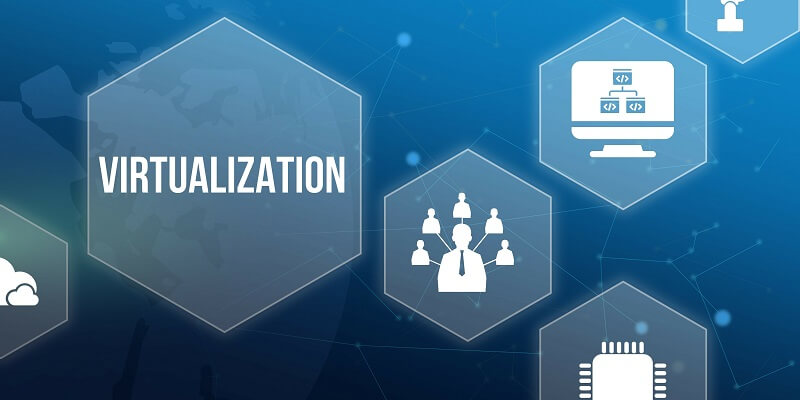In today’s rapidly evolving digital landscape, virtualization has emerged as a key technology that enables businesses to optimize their computing resources and drive efficiency. This article provides an in-depth exploration of virtualization and its various components within a cloud infrastructure. We will discuss the benefits and advantages of virtualization, including resource optimization, cost reduction, and scalability enhancement. Additionally, we will delve into server, network, storage, and desktop virtualization, highlighting their specific benefits and use cases. Lastly, we will explore the efficiency gains, cost savings, and disaster recovery advantages that can be achieved through the strategic adoption of virtualization technologies.
Benefits of Virtualization
Virtualization offers several benefits that propel businesses towards greater efficiency and cost savings. By optimizing resource usage, such as servers, networks, storage, and desktops, virtualization reduces wasted capacity and maximizes the use of available computing resources. This not only enhances operational efficiency but also results in significant cost reductions. Additionally, virtualization provides scalability advantages, allowing businesses to quickly adapt and allocate resources based on workload requirements.
Server Virtualization
Server virtualization is a critical aspect of virtualization technology. It involves creating virtual versions of physical servers, which optimizes resource utilization by running multiple virtual machines (VMs) on a single server. This consolidation of infrastructure reduces hardware costs, energy consumption, and maintenance expenses. Server virtualization also enhances scalability, as businesses can easily add or remove VMs based on demand, ensuring resources are allocated efficiently.
Network virtualization
Network virtualization simplifies network management and enhances flexibility. By encapsulating networks into virtual resources, businesses gain the ability to provision, manage, and scale their networks more efficiently. This flexibility enables seamless adaptation to changing demands, such as adding new applications or accommodating increased network traffic. Furthermore, network virtualization streamlines network security processes, making it easier to enforce policies and safeguards across the virtualized network.
Storage Virtualization
To simplify data storage and management, organizations turn to storage virtualization. This technology abstracts physical storage resources, allowing for a unified and centralized view of data storage across various devices and locations. Storage virtualization improves data availability and reliability, as it enables redundancy and replication mechanisms. Additionally, it streamlines backup and disaster recovery processes, ensuring data integrity and decreasing recovery time in the event of disruptions or hardware failures.
Desktop Virtualization
Desktop virtualization is revolutionizing workforce mobility by enabling employees to access their desktops and applications from any device, anywhere. By hosting desktop environments in a virtualized infrastructure, businesses can reduce the need for physical desktops, thus lowering hardware costs and enhancing data security. Desktop virtualization also improves productivity by facilitating seamless collaboration and enabling remote work, resulting in increased efficiency and flexibility.
Efficiency and Resource Optimization
One of the primary advantages of virtualization is its ability to optimize computing resources. By creating virtual versions of servers, networks, storage, and desktops, businesses can reduce reliance on physical machines. This consolidation enhances efficiency, streamlines processes, and lowers operational costs. Moreover, virtualization enables dynamic allocation of resources, allowing businesses to scale up or down based on demand, resulting in optimal resource utilization.
Scalability and Adaptability
In an ever-changing business environment, the ability to scale resources according to demand is paramount. Virtualization technologies provide the agility required for businesses to adapt quickly and cost-effectively to changing workload requirements. Whether it is adding or removing virtual machines, adjusting network configurations, or expanding storage capacity, virtualization enables businesses to meet their evolving needs with ease, thereby enhancing operational efficiency and reducing costs associated with unnecessary resource provisioning.
Cost Savings through Virtualization
Virtualization offers numerous cost-saving opportunities for businesses. By consolidating infrastructure, businesses can reduce hardware costs by running multiple virtual machines on a single server. This consolidation also leads to decreased energy consumption and lower maintenance expenses. Moreover, optimizing resource utilization through virtualization translates into more efficient use of computing resources, ultimately resulting in significant cost savings.
Disaster Recovery Advantages
In the face of unforeseen disruptions or hardware failures, virtualization simplifies the restoration process. The encapsulation of virtual machines or workloads enables faster recovery times, as the virtualized environment can be migrated and restored more seamlessly than physical machines. This improves business continuity and minimizes downtime, ensuring a swift return to normal operations. Additionally, virtualized environments facilitate the implementation of robust disaster recovery strategies, ensuring data integrity and minimizing the impact of critical events.
Virtualization presents a multitude of benefits for businesses seeking to enhance efficiency and reduce costs. By leveraging virtualization technologies such as server virtualization, network virtualization, storage virtualization, and desktop virtualization, organizations can optimize resource usage, increase scalability, simplify data management, and transform workforce mobility. The consolidation of infrastructure and the ability to scale resources on demand contribute to significant cost savings. Furthermore, virtualization simplifies disaster recovery processes, allowing for faster restoration of services. In this era of rapid digital transformation, businesses are encouraged to embrace virtualization as a strategic tool to unlock efficiency gains and achieve long-term cost savings.

